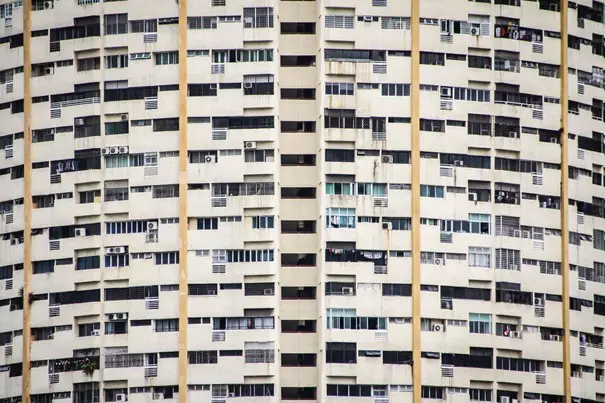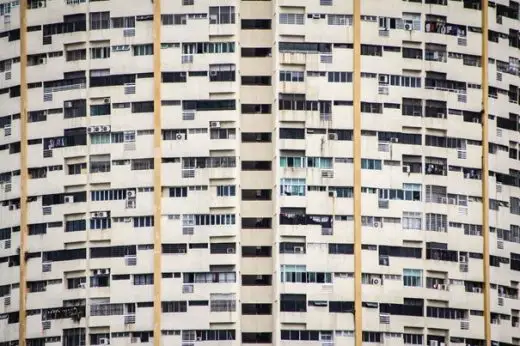Housing for all: how can architecture manage this?, Building Design Tips, Online Advice
Housing For All: How Can Architecture Manage This?
24 Nov 2021
Affordable housing is an issue that concerns everyone in the whole world. More and more people, the world population is racing inexorably towards the 8th billion, especially in populous parts of the world like Asia. Already, many people are having trouble finding affordable housing, and it’s also becoming more and more of a challenge for architecture when it comes to construction. Good solutions for this can be found in Thailand, where, for example, with an experienced architect in Phuket, you can still build worthwhile at normal costs. Efficiency and logistics are two of the most important factors when it comes to creating housing that remains affordable for the average person, but does not negatively impact the cityscape!
Why housing for all is so important
Planning your own house, having the garden designed by a star landscape architect and creating a place to live for many generations is not something that everyone can do. Instead, there is often a shortage of housing in the big cities, and the demand is constantly increasing. A problem that is global, there is far more need and too little housing that everyone can afford. This is a challenge not only for the politicians of the various countries, but above all for architecture, whose task is to create efficient, affordable and yet sustainable living spaces.
The demands on living space have changed. People today are looking for proximity to the city, optimized living spaces, accessibility and sustainability. The supply of appropriate properties is dwindling year by year as population density grows. So it’s up to architects to intervene right here and ensure that housing is created that meets the specifications for modern living, but is still within reach of the average citizen.
Housing for all is needed in order to reduce the numbers of the homeless on the one hand and also not to endanger the economy on the other. Because: without housing in most cases no job and thus a growing social gap between the different social classes. The demand? High, because the prices for the construction of buildings are constantly rising, the demands on architects are becoming higher.
When desire and reality correlate
Architects almost always encounter similar problems when planning their assignments. Before they are even contacted and commissioned by initiative groups, a housing concept has already been drafted by the appropriate body. The needs of housing creators are already explicitly stated in it, and they are by no means small. Energy-efficient, ecological, barrier-free and inexpensive – these are the minimum requirements placed on architects. But the planners themselves usually don’t have much to do with money. They expect a ready-made solution, according to their own needs, carried out by the architect.
For the architect, the most important premise is to differentiate unrealistic wishes from realism. An already existing plan must be carefully examined and then it goes into the negotiations. Which points can be implemented, where is implementation completely out of the question?
To satisfy the customer, alternatives are needed, trade-offs that are feasible, a symbiosis of desire and reality. This can lead to dissatisfaction, but savings effects are not economically relevant at every point. Sometimes the higher investment is more economical in the long run than the price saving in construction!
Facilitation in building law imperative
In order to counter the growing urbanization, relief in the building code is needed above all. Standards must be optimized, with feasibility always in focus. The goal should be to increase the efficiency of space, to provide more living space on the same area, and to do so without permanently relying on high-rise buildings, which can have a negative impact on the cityscape.
And there also needs to be a greater focus on private willingness to invest. People whose financial resources are sufficient to invest in affordable housing need tax incentives to invest here. New rental housing is critical to meeting the needs of the population and not all costs can be met through municipal funds.
Faster planning for more housing
It has become a global problem in the real estate industry that a planning and lead time of at least four years is required for the construction of buildings. Depending on the country, it can take up to five years from the moment the need is identified until the tenant moves in for the first time, and this is precisely where optimization is needed. Faster planning makes it possible to respond more efficiently to existing demand.
There is a permanent underproduction in the housing & real estate market. For years, in almost all countries of the world, there has been more demand than housing. If new buildings are erected, it almost always happens under pressure, with cutbacks, with lack of money. In the long-term, however, it is precisely these quick fixes that have no effect and ensure that the housing shortage is only resolved in the short term.
For the architecture, on the other hand, the focus is on long-term social housing. Every new building is a cross-generational project and must be built with a correspondingly promising future in mind. The existing demands on housing consist of sound insulation, comfort, climate neutrality and energy efficiency. But the goal of modern architecture is to construct buildings that will still be habitable under good conditions in 30 years.
Uniformity creates difficulties
Uniform housing construction was of particular importance for many years and was seen as the solution to many problems. Wrongly, as modern architecture has long known. It is a historical solution approach to achieve all buildings according to scheme F and not to pay attention to individual needs and diversity. This mistake has already been strongly discussed and analyzed in the past.
Thus, the main task of architecture is not to achieve mass buildings and create massive amounts of housing in the short term. A permanent solution is progress in housing construction. The goal is to create affordable housing, with diverse and inclusive uses on a variety of footholds.
The solution to the housing shortage cannot be carried out on one back alone. Authorities, municipalities and states are not exclusively responsible for alleviating the housing shortage. What is needed is an alliance between private initiatives and public authorities, between public administration and the private sector.
Housing for all: Global, not regional
It is also important to think outside the box. Housing shortages are not a regional problem; almost every country in the world suffers from them. Creating affordable housing is therefore a global project in which countries can learn from and complement each other. For modern architects, it is not only important to network with countries and with private investors, but also to be able to think and act globally and, above all, with an eye to the future. Housing that is built now is not just for short-term relief of needs, but for the long-term restructuring of countries.
Comments on this Housing for all: Can architecture manage this? article are welcome.
Housing & Building Design
Residential Architecture
Comments / photos for the Housing for all: How can architecture manage this? page welcome






